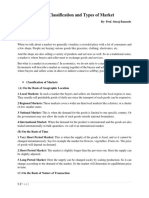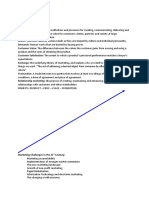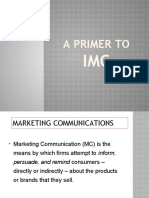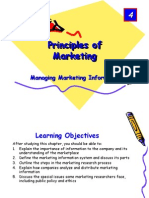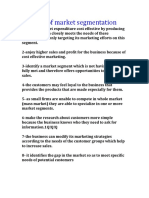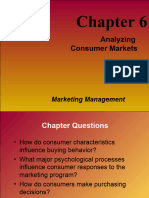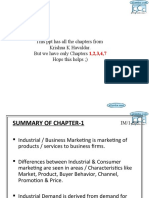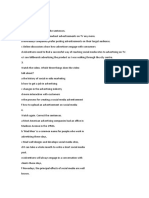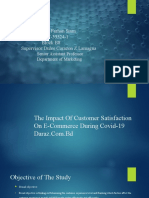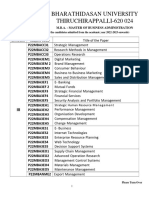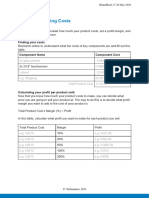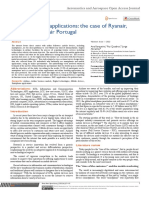0% found this document useful (0 votes)
268 views2 pagesNotes On STP and USP
The STP process is a marketing strategy that involves segmenting the customer base, targeting specific customer segments, and positioning products and services to meet the needs of the targeted segments. Marketers use the STP model to segment customers by attributes, determine which segments to target based on profitability and growth potential, and position brands in places where targeted customers are most likely to find them. The steps involve identifying customer segments based on factors like demographics, targeting the most profitable segments, and creating a unique selling proposition to appeal to targeted segments through targeted advertising.
Uploaded by
Soumya Ranjan PradhanCopyright
© © All Rights Reserved
We take content rights seriously. If you suspect this is your content, claim it here.
Available Formats
Download as DOCX, PDF, TXT or read online on Scribd
0% found this document useful (0 votes)
268 views2 pagesNotes On STP and USP
The STP process is a marketing strategy that involves segmenting the customer base, targeting specific customer segments, and positioning products and services to meet the needs of the targeted segments. Marketers use the STP model to segment customers by attributes, determine which segments to target based on profitability and growth potential, and position brands in places where targeted customers are most likely to find them. The steps involve identifying customer segments based on factors like demographics, targeting the most profitable segments, and creating a unique selling proposition to appeal to targeted segments through targeted advertising.
Uploaded by
Soumya Ranjan PradhanCopyright
© © All Rights Reserved
We take content rights seriously. If you suspect this is your content, claim it here.
Available Formats
Download as DOCX, PDF, TXT or read online on Scribd
/ 2










